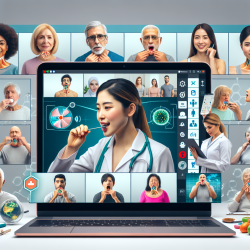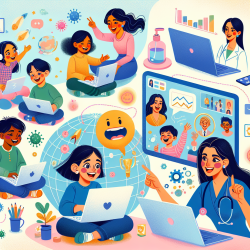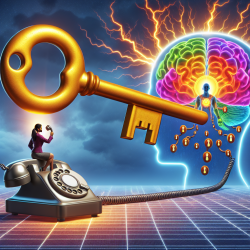Introduction
In the evolving landscape of healthcare, telerehabilitation has emerged as a beacon of hope for managing complex conditions like neurogenic dysphagia. This condition, often resulting from neurological disorders, affects the ability to swallow, posing significant risks to health and quality of life. Traditionally, the management of dysphagia required face-to-face interactions, but recent advancements in technology have paved the way for remote interventions.
The Rise of Telerehabilitation
Telerehabilitation, the provision of rehabilitation services via information and communication technologies (ICT), has gained traction due to its potential to overcome barriers such as geographical distance and limited access to specialized care. The systematic review by Reverberi et al. highlights the effectiveness of telerehabilitation in managing neurogenic dysphagia, showcasing its potential as a viable alternative to traditional methods.
Key Findings from the Systematic Review
- Significant levels of agreement were found between clinical swallow examinations conducted via telerehabilitation and those conducted in person.
- Both clinicians and patients reported high satisfaction with telerehabilitation, emphasizing its feasibility and acceptance.
- Telerehabilitation facilitated increased access to care, especially during the COVID-19 pandemic, by minimizing exposure risks and reducing healthcare system burdens.
Benefits of Telerehabilitation
The review identified several advantages of telerehabilitation, including:
- Enhanced access to specialized care for patients in remote or underserved areas.
- Cost-effectiveness by reducing travel and associated expenses.
- Improved patient autonomy and involvement in their own care management.
- Continuity of care with the possibility of regular monitoring and follow-ups.
Challenges and Recommendations
Despite its promise, telerehabilitation faces challenges such as technological limitations and the need for trained personnel to assist during sessions. The authors recommend the development of practical guidelines to optimize telerehabilitation sessions. These include ensuring proper patient positioning, using high-quality audio-visual equipment, and involving caregivers in the process to enhance support and compliance.
Conclusion
Telerehabilitation represents a transformative approach in the management of neurogenic dysphagia, offering a reliable and effective alternative to traditional face-to-face therapy. As technology continues to advance, the integration of telerehabilitation into standard care practices holds the potential to significantly improve patient outcomes and access to care.
For more information, please follow this link.










